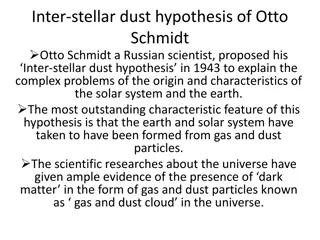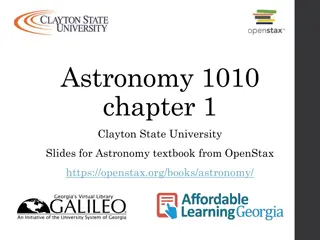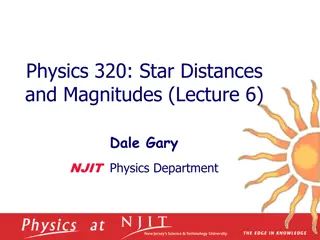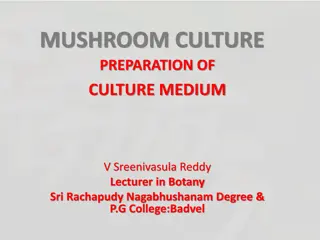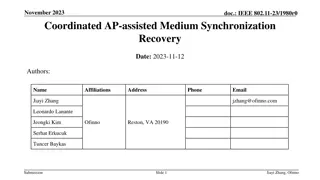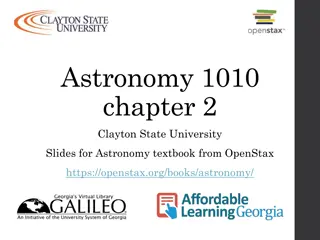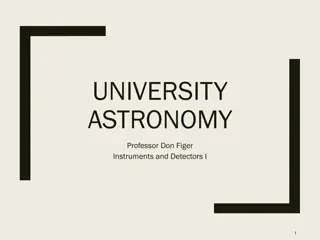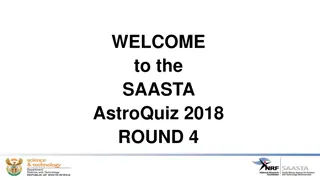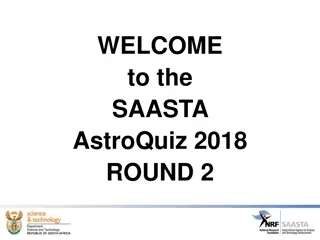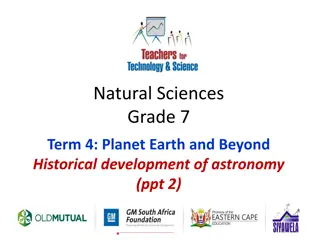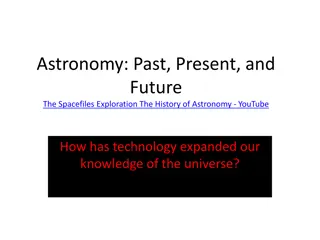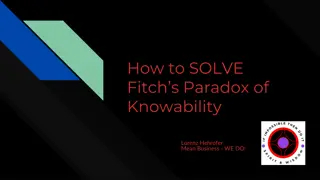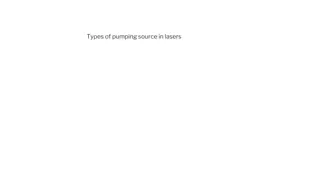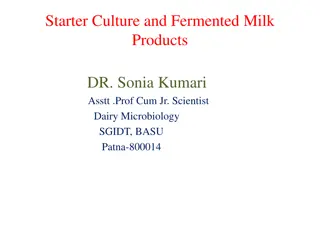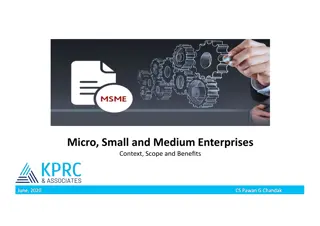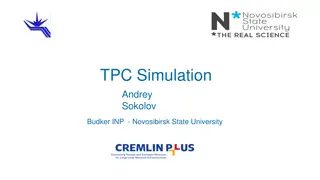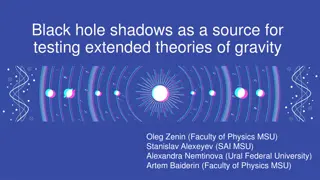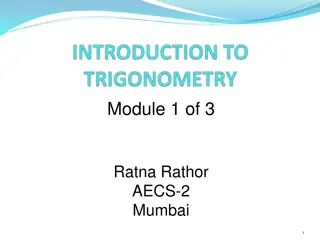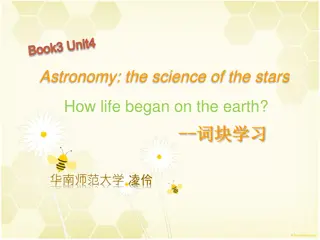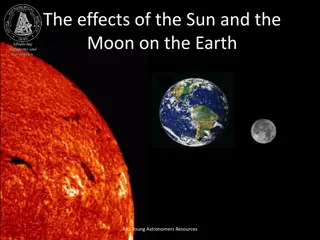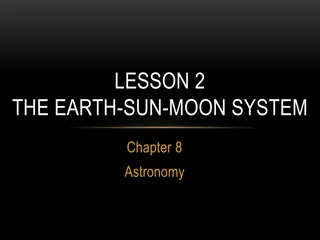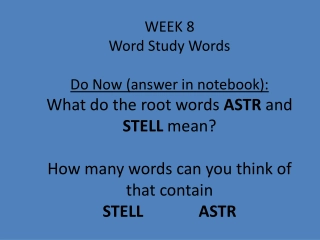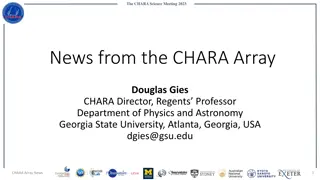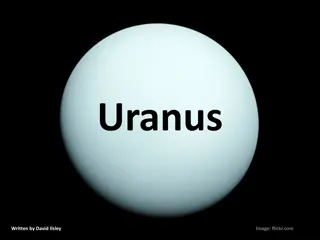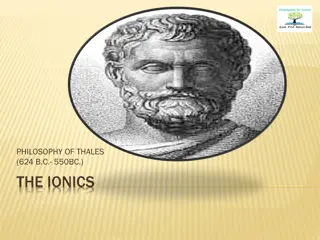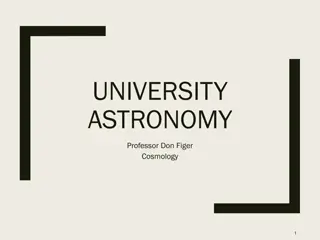Exploring the Interstellar Medium in Astronomy
Delve into the vast expanse of the Interstellar Medium (ISM), the space between stars filled with gas, dust, and nebulae. Understand the components of the ISM, including emission and reflection nebulae, and learn about the intriguing phenomena that shape our view of the cosmos.
Download Presentation

Please find below an Image/Link to download the presentation.
The content on the website is provided AS IS for your information and personal use only. It may not be sold, licensed, or shared on other websites without obtaining consent from the author. Download presentation by click this link. If you encounter any issues during the download, it is possible that the publisher has removed the file from their server.
E N D
Presentation Transcript
UNIVERSITY ASTRONOMY Professor Don Figer The Interstellar Medium 1
Aims and outline for this lecture describe components of the interstellar medium explain the source and effects of extinction 2
COMPONENTS OF THE ISM 3
The ISM The ISM is the interstellar medium, also known as the stuff between the stars. It contains atoms and molecules in the form of gas and also grains of dust. The material varies in density with the densest parts representing gas/dust clouds. The temperature and ionization states of the material depend on the local photon radiation field and matter-matter collisions, such as due to jets. 4
The Stuff Between Stars Space isn t empty, but is nearly so. All the interstellar gas and dust in a volume the size of the Earth only yields enough matter to make a pair of dice. 5
Nebulae Nebula is a general term used for fuzzy objects in the sky. The term was used to name things that we now know are actually galaxies and star clusters, so we no longer use this word for those objects. We continue to use the word to describe gas/dust that reflects or emits radiation. Emission nebula: glows, due to hot stars Reflection nebula: light from star bounces off of cloud particles 6
Emission Nebulae Emission nebulae emit their own light. The emission can come from bound-bound transitions as electrons recombine and cascade to lower energy levels. This means that the electrons were ionized initially, telling us that there is an ionizing source (hot star) nearby. The emission can also be in the form of blackbody radiation from warm dust. 7
M17 8
Reflection Nebulae Reflection nebulae appear to emit light, but they actually reflect light from a nearby source. The spectrum of the reflected light is the same as the spectrum of the source. Dust in the nebula provides the reflective surfaces. 9
Pleaides 10
Molecular Clouds Molecular clouds contain molecular gas and dust. They can sometimes be seen because they are blocking background light. Some of the clouds are dense enough to fragment and collapse into stars. They also emit radiation, such as molecular lines and blackbody continuum radiation. 11
Gas and Dust The interstellar medium consists of gas and dust. Gas is atoms and small molecules, mostly hydrogen and helium. Dust is more like soot or smoke, larger clumps of particles. Dust absorbs light and reddens light that gets through. If dust clouds block light, then inside thick dust clouds there should be no light at all. Without light, there is little energy. With little energy, any gas inside is very, very cold. Inside molecules can form. 12
Barnard 68 13
Region Near M4 The central portion of this cloud is very dark and can be seen only by its obscuration of the background stars. Nearby are reflection and emission nebulae; M4 is a globular star cluster. 16
Molecular Lines This is a contour map of H2CO near the M20, the Trifid Nebula. Here, the red and green lines correspond to different rotational transitions. Other molecules that can be useful for mapping out these clouds are CO2 and H2O. 17
Photoionization There is a strong interaction between the nebula and the stars within it. The fuzzy areas near the pillars are due to photoevaporation. The Eagle Nebula (Pillars of Creation) and the Lagoon Nebula (M8) are shown on the right. 19
Ionization Schematic of an H II/photodissociation region and its fluorescent H 2. Ultraviolet light from the massive star excites H 2 to the Lyman and Werner bands. The 2.12 m emission line radiates as H 2 molecules cascade down to their lower states. 21
Photodissociation Regions Photons with energies greater than 13.6 eV ionize hydrogen. Photons with slightly less energies can ionize other atoms with lower ionization potentials and can also break apart molecules. Photodissociation regions (PDRs) are interstellar gas phases in which far-ultraviolet (FUV; 6 eV < h < 13.6 eV) radiation plays a role in the heating and or chemistry. These include the diffuse atomic interstellar medium, and the surfaces of molecular clouds exposed to the interstellar radiation field and to intense radiation from nearby OB stars. 22
EXTINCTION 24
Extinction Why are sunsets red? Light is absorbed or scattered by objects the same size or smaller than its wavelength. Dust grains have a size approximately equal to a wavelength of blue light Dust clouds: Opaque to blue light, UV, X-rays Transparent to red light, IR, radio Whenever there is a lot of dust between you and the Sun, the blue light is absorbed or scattered leaving the only the red light. 25
Where is the Center of the Galaxy? infrared optical Digitized Sky Survey Figer 1995 27
Proof of Dust The existence of dust was controversial until ~100 years ago. William Herschel showed that star counts were fewer in some directions. Barnard s images showed reduction in star counts. Trumpler conclusively demonstrated interstellar absorption by observing star clusters and estimated 2 mag/kpc in V-band. Starlight is polarized in regions of high extinction with one polarization state selectively removed by scattering from small elongated conducting or dielectric particles aligned in the galactic magnetic field. Dust grains are aspherical and polarize background light. Reflection nebulae are signs of dust. 28
Extinction by Dust: Wavelength Dependence 29
Magnitudes vs. Optical Depth Consider spherical dust particles with radius of a, ? ? = ??2????? where ???? ( ) is the efficiency factor for extinction. The optical depth is ??= ????????? = ?? ??????? =??2????? ?????. In magnitudes, ?? ?0,? ??= ?0,?? ??, ??= 2.5???10 = 2.5???10(?)??=1.086?? So, the extinction is directly proportional to the column density, N. 31
Extinction mobs( )=m0( )+A( ), where m0is called the dereddened magnitude. The distance modulus, m M needs to be modified to account for extinction when using the apparent reddened magnitude. mobs( ) M=5log(d) 5+A( ) Without taking account of the extinction, one will mistakenly calculate distances that are too far compared to the real distances (as was done by Shapley). 32
Color Excess The color excess is written as E( 1 2). E(B-V)=(mB mV) (mB,0 mV,0)=(mB mB,0) (mV mV,0)=AB AV This quantity is useful for estimating extinction. To calculate it, one must know the intrinsic colors of an object. This is possible if one knows the spectral type of the star. Once one has the color excess, it is possible to estimate the absolute value of the extinction at any wavelength, assuming an appropriate extinction law. 33
Extinction Law The extinction law describes the amount of extinction as a function of wavelength. It is often expressed as a power law. Sometimes, it is expressed as the selective extinction, RV. It is generally the same in all directions. ?? ??,? ??? ?~ 1.6 ?(?) ?(? ?) ??= 34
An Example Imagine that we observe star near the Galactic Center and find H=14 and K=12. We take a spectrum and find that it is an O-star. We look up the intrinsic color of an O-star in H K and fine that it is (H K)0= 0.05. So, E(H K)=(H K) (H K)0=14 12 0.05=2.05. ? ? ? = ? ? ?(?) ? ? ? ?(?) =? ? ?(?) ?(?) =?(?) ?(?) 1 ? ? =? ? ? ?(?) =? ? ? ?? ?? 2.05 1.6 = = 3.1 ? 1.6 2.2 ?(?) 1 1 1 35
Extinction by Dust: Effect on Spectrum 36
Extinction by dust J. S. Mathis 1990, ARAA, 28, 37. A( )/A(J) A( )/A(J) A( )/A(J) ( m) ( m) ( m) 0.24 0.218 Rv=3.1 Rv=5.0 Rv=3.1 Rv=5.0 250 100 60 35 25 20 18 15 12 10 9.7 0.0015 0.0041 0.0071 0.013 0.048 0.075 0.083 0.053 0.098 0.192 0.208 0.157 0.07 5 0.095 0.182 0.382 0.624 1.00 1.70 2.66 3.55 4.7 5.53 5.87 6.9 7.63 0.095 0.182 0.382 0.624 1.00 1.70 2.43 3.06 3.67 4.07 4.12 4.34 4.59 9.03 11.29 10.08 8.93 9.44 11.09 12.71 17.2 19.1 9.15 7.31 3.39 1.35 5.13 6.03 5.32 4.66 4.57 4.89 5.32 -- -- -- -- -- 3.4 2.2 1.65 1.25 0.9 0.7 0.55 0.44 0.365 0.33 0.28 0.26 0.2 0.18 0.15 0.13 0.12 0.091 0.073 0.041 0.023 0.004 0.002 9 7 38
Silicates and Ices in Interstellar Medium: W3 39
Homework #13 16.1, 16.2, 16.3, 16.7, 19.8 1. What is the K-band extinction for a red giant that has observed H-K=2.35? Note that (H-K)0=0.30. 42



